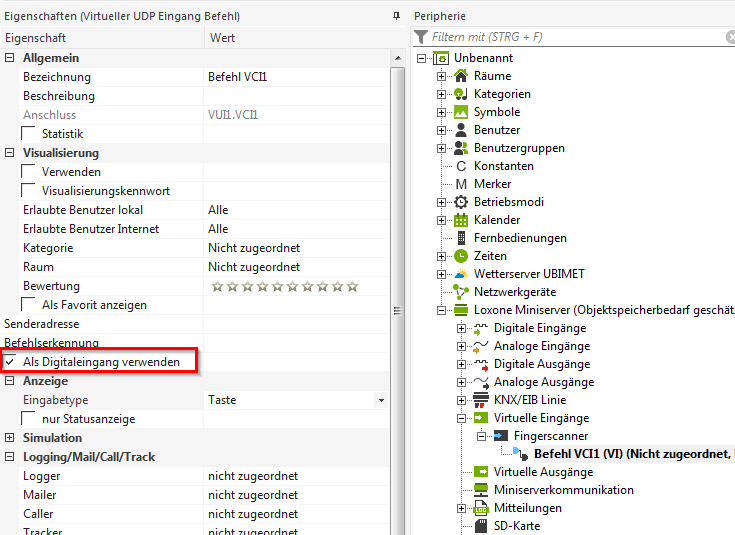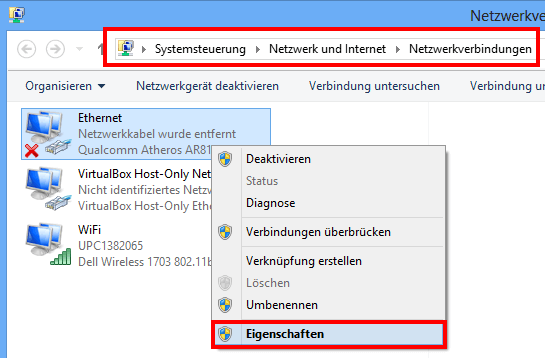
Ideally the Loxone Miniserver would be able to directly send MQTT messages. As we are sending only every 10 seconds a running average, with a window size twice the reporting interval makes much more sense than momentary values.

Many of the values I pass are precomputed and you can see that I use the running average function to smooth out values before I sent them to the cloud platform. Stream_write(udpStream, msg, strlen(msg)) Īnd in the graphical Loxone programming environment this looks as follows. STREAM* udpStream = stream_create("/dev/udp//xxxx”,0,0) create a simple JSON string with the float values
Loxone miniserver ip adresse code#
For this I created a small block that runs picoC code in the Loxone environment.īelow the example, very simple picoC code that sends the UDP message, you of course need to adjust the JSON message and the IP address and UDP port to which your IoT Gateway (here the mbed LXP) is listening. Now the second part is to get the Loxone Miniserver to send UDP messages with some sensor values such as temperatures and other key indicators (such as computed energy production and use) to the ARM mbed controller. Now every time a UDP message arrives it is forwarded to the Watson IoT Platform using the MQTT protocol. I extended the main loop of the C program running on the ARM to listen to incoming UDP messages from the local subnet instead of sending measurements periodically.

In a nutshell I used the example recipe to connect the ARM LPC 1768 to the Watson IoT Platform. Let me explain how I connected the Loxone Miniserver to the IBM Watson IoT Platform through a custom miniserver extension leveraging a small ARM mBed microcontroller. (An example is speech output if a critical condition is detected)

The cloud is a good tool to integrate such disparate data sources and use the combined data for cognitive functions. The data from these devices (such as some humidity sensors detecting if our flowers need water) is not vital to the operation of my home, however combining this data with the other data from the miniserver allows advanced functions to be implemented. I also want to use this data for higher layer logic, such as the prediction of how much longer I have solar (heat) energy available to heat my house at the current run rates and by taking the weather into account.įinally I have additional devices and data sources that have no connection to my miniserver. This is not universally applicableĪlso there are use cases when I just want to include data from my home in some fancy visualization/dashboards without needing to directly connect to the Loxone Miniserver. In my home I address this via a VPN connection between my mobile devices and the home to ensure no passwords and the like are sent over unencrypted channels.
Loxone miniserver ip adresse password#
The basic password authentication over unencrypted links is not state of the art. What I do not like about accessing my smart home from the internet is the (lack of) security that the Loxone PLC offers against attacks from the Internet. Reasons to connect the miniserver to the Watson IoT Cloud I also like the smart phone app that Loxone provides and the way I can program the logic, it is very flexibly. I love that it is self contained, it has logic „at the edge“ that keeps my home working without a dependency on a cloud.

I wrote about this system in earlier blogs. My home runs on a PLC controller from Loxone (aka the Miniserver).


 0 kommentar(er)
0 kommentar(er)
